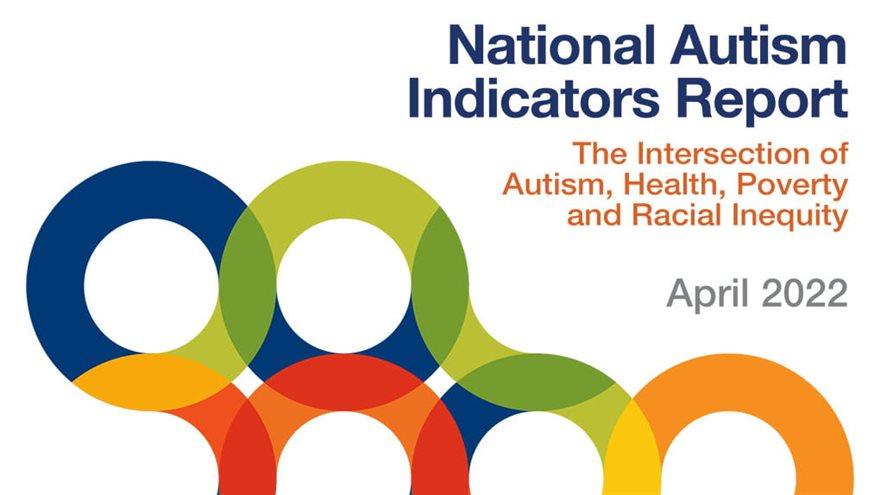Report: Autistic Children at the Intersection of Race and Poverty Experience Compounding Health Risks

- Drexel Environmental Collaboratory Releases Cross-Sector Findings on Severe Weather Recovery Challenges
- Drexel’s Hydration Stations Cut Plastic Waste and Costs
- Drexel Launches the Manuel Stamatakis Center for Alternative Investments at the LeBow College of Business
- How and When Could AI Be Used in Emergency Medicine?

The Autism Intervention Research Network on Physical Health (AIR-P), a multi-site collaboration housed within UCLA Health's Department of Medicine since September 2020, and the Health Services Systems Node of AIR-P, based at the Policy and Analytics Center at Drexel University's A.J. Drexel Autism Institute, have released the latest National Autism Indicator's Report using national data to highlight the intersection of autism, poverty, race/ethnicity and their compounding impact on health and health care.
While it is well known that autistic children, children from lower-income households, and children who are Black, Indigenous and people of color (BIPOC) disproportionally experience poor health and health care access, very little is known about how these social identities “intersect” to impact health and health care outcomes. Better understanding the intersectionality of these characteristics will allow for more targeted and tailored interventions to improve health outcomes. The new report finds that autism, poverty and non-white race/ethnicity appear to increase rates of health concerns and care challenges, both individually and in combination.“Discrimination based on race and socioeconomic status is increasingly recognized as an important risk factor to people’s health,” said Alice Kuo, MD, PhD, chief of Medicine-Pediatrics at UCLA and project investigator for the federally-funded AIR-P. “With this report, we can begin to see the devastating combination of autism, poverty and race, an important step in translating the research we do into policy and practice to improve outcomes for people with autism.”
“Findings like these are important because policymakers, decision-makers and advocates use this information to better understand the needs of the autism population and guide the development of targeted programs and services” said Kristy Anderson, PhD, a researcher at the Autism Institute and first author of the report.
Report Highlights
To better understand the economic situation of autistic children, the report provides new estimates about the size and characteristics of the population living in lower-income households overall, and by key subgroups defined by race and ethnicity. According to the report, over half of autistic children lived in low-income households and one in four was living in poverty, a higher rate compared to children without autism spectrum disorder. Children living in low-income households were more likely to be non-white relative to the general population.
Across all income levels, autistic children experienced more challenges than non-autistic children across a wide range of health outcomes.
- Both poverty and race/ethnicity independently, and in combination, contributed to health inequities among autistic children.
- Household income was a very important factor for understanding health disparities for autistic individuals, as it is associated with differences in health status, insurance coverage, medical expenditures and health care access.
- Higher rates of health-related challenges were evident across all socioeconomic groups.
- While children living in poverty generally had the highest rates of health and health care challenges regardless of autism status, and rates typically decreased with each level of rising income, there were still notable differences in the relationship between income and health and health care among autistic children versus non-autistic children.
- Race/ethnicity were also risk factors for poor health and health care outcomes among autistic children.
- Differences between white and BIPOC children were also present across specific racial/ethnic categories.
- Racial/ethnic disparities remained, even when grouping data by household income.
The report found that groups who had multiple potential risk factors (poverty, autism, identifying as BIPOC) had higher rates of poor health and health care outcomes. In some cases, the differences observed between income groups were more substantial than the differences associated with autism status, or between white and BIPOC children. The authors argue that efforts to reduce health inequities must be combined with efforts to improve the economic stability of children, especially those with autism and those who are BIPOC. They call for greater attention to programs and policies outside of health care to address health equity among U.S. autistic children.
The AIR-P uses identity-first language (eg: autistic person) rather than person-first language (eg: person with autism) when describing autism to align with the preferences of many self-advocates. AIR-P acknowledges and respects the choice of individuals on the autism spectrum to be referred to in their preferred terminology.
This project is supported by the Health Resources and Services Administration (HRSA) of the U.S. Department of Health and Human Services (HHS) under award UT2MC39440, the Autism Intervention Research Network on Physical Health. The information, content, and/or conclusions are those of the author and should not be construed as the official position of, nor should any endorsements be inferred by HRSA, HHS, or the U.S. Government.
In This Article
Contact
Drexel News is produced by
University Marketing and Communications.